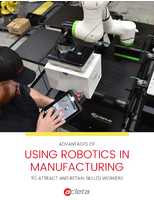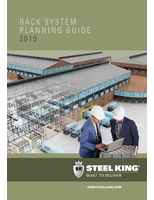Earthquake-Proof Seismic Crane

TELESCOPIC MAST ARTICULATING CRANE REPLACES NUCLEAR RODS
Mentor, Ohio - Air Technical Industries announces the manufacturing of the unique telescopic mast articulating crane, constructed mostly from aluminum.
The crane will be used by a California Nuclear Power Plant for replacing the fuel rods in Combustion Engineering reactors rated at 1100 Mwe supplying electricity for 1.4 million homes. The modular design of the crane has several unique features: The telescopic mast that can raise up to 57' high. The telescopic action is hydraulically operated. The mast has 300° powered mast rotation with a soft start and stop for smooth boom travel. The beam rotation is equipped with a mechanical slip-clutch to allow it to "break-away" to prevent damage in the event the crane comes in contact with other objects or is subject to excessive side-loading.
The lifting is provided by a high-lift chain hoist with 2000 lbs. capacity and 60' of vertical lift. The hoist is mounted on a motorized trolley for positioning the fuel rods as precisely as needed.
The crane is equipped with an operator platform at the height of 40' for visually controlling and manipulating the placement of the fuel rods.
All of the controls are remote, pendant-mounted, push button for flexibility and convenient use. The beam is equipped with dual festooning systems, one of which is for the low voltage multi-conductor cable for all the function controls. The other festooning is for the high voltage 3-phase power source.
The crane has three flange mounting points for installation that uniquely fit directly on to the nuclear reactor flange. The crane is not installed on the floor of the building for seismic considerations, so even if the floor collapses in the event of an earthquake, the crane stays put.
The modular form of the crane with telescopic mast allows it to be quickly assembled, pinned, and ready for operation in just a few hours, and then conveniently removed and stored out of the way in a corner of the building or other storage area until the next use.
The construction of the crane is 90% aluminum 6061 and 10% stainless steel, mostly welded sub-assembly, which are then bolted by stainless steel fasteners. The modular components utilize quick-release pins to avoid the need to turn nuts and bolts, which would also require that the crane be re-certified after each assembly. The attaching flanges to the reactor were built out of A36 steel welded construction providing a heavy-duty rigid mounting connection.
All the tests were performed at Air Technical Industries in Mentor, Ohio on a simulated nuclear reactor flange test fixture.




